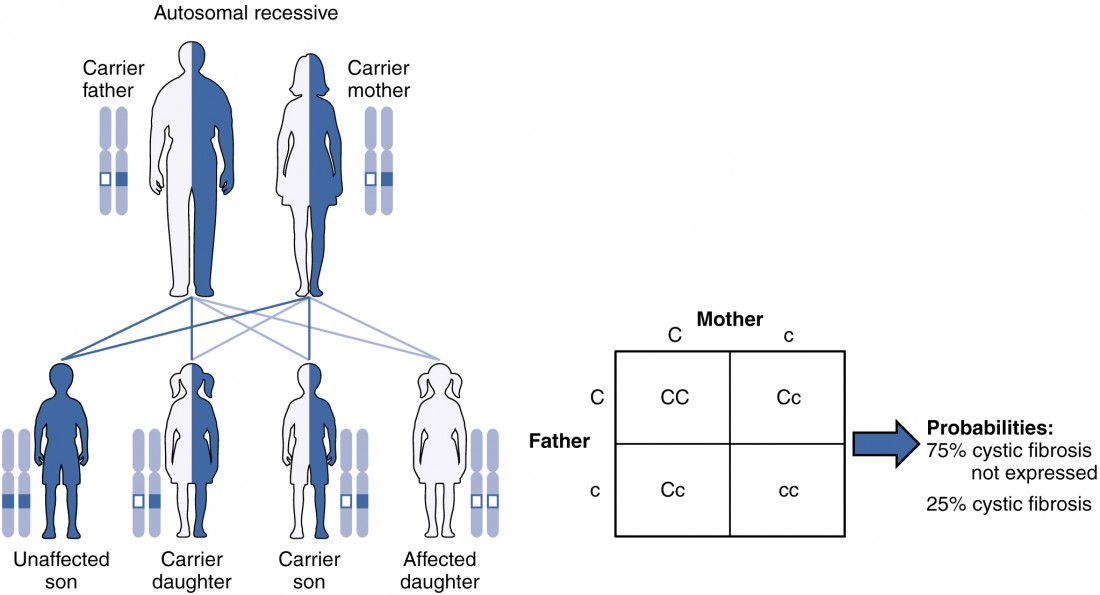Introduction: Genetic inheritance patterns govern the transmission of genetic information from one generation to the next, shaping the characteristics and traits of individuals within a population. Understanding these inheritance patterns is fundamental to unraveling the complexities of human genetics, disease inheritance, and evolutionary biology. In this comprehensive guide, we delve into the intricacies of genetic inheritance patterns, exploring the principles, mechanisms, and analytical techniques involved in deciphering the genetic code and unraveling the mysteries of heredity.
- Principles of Genetic Inheritance: Genetic inheritance refers to the process by which genetic information is passed from parents to offspring through reproductive cells (gametes). The principles of genetic inheritance are governed by the laws of Mendelian genetics, proposed by Gregor Mendel in the 19th century. These laws include the law of segregation, which states that alleles (alternative forms of a gene) segregate randomly during gamete formation, and the law of independent assortment, which states that alleles of different genes assort independently of one another during gamete formation.
- Modes of Inheritance: Genetic traits can be inherited according to various patterns, including autosomal dominant, autosomal recessive, X-linked dominant, X-linked recessive, and mitochondrial inheritance. Autosomal dominant inheritance occurs when a single copy of a dominant allele is sufficient to produce a phenotype, while autosomal recessive inheritance requires two copies of a recessive allele. X-linked inheritance involves genes located on the X chromosome, with different inheritance patterns depending on whether the gene is dominant or recessive.
- Pedigree Analysis: Pedigree analysis is a powerful tool for studying genetic inheritance patterns in families and populations. Pedigrees are diagrams that depict the relationships among individuals within a family, tracing the transmission of genetic traits across multiple generations. Key features of pedigree analysis include identifying affected individuals (those exhibiting the trait of interest), determining the mode of inheritance, and calculating the probability of inheritance for future generations. Pedigree symbols and conventions are used to represent different phenotypes, genotypes, and relationships within a pedigree.
- Punnett Squares and Probability: Punnett squares are graphical tools used to predict the outcomes of genetic crosses and calculate the probabilities of specific genotypes and phenotypes in offspring. By combining alleles from parental gametes, Punnett squares allow for the visualization of genetic inheritance patterns and the determination of genotype frequencies in a population. Probability calculations based on Punnett squares rely on the principles of Mendelian genetics and the laws of probability, such as the multiplication rule and the addition rule.
- Genetic Linkage and Recombination: Genetic linkage refers to the tendency of genes located on the same chromosome to be inherited together during meiosis, due to their physical proximity. Genetic recombination, or crossing over, occurs during meiosis when homologous chromosomes exchange genetic material, resulting in the reshuffling of alleles and the creation of new combinations of genes. Genetic linkage and recombination influence the inheritance patterns of linked genes and contribute to genetic diversity within populations.
- Hardy-Weinberg Equilibrium: The Hardy-Weinberg equilibrium is a mathematical model used to describe the distribution of alleles and genotypes in a population that is not evolving. According to this model, allele frequencies remain constant from generation to generation in the absence of evolutionary forces such as mutation, migration, genetic drift, and natural selection. The Hardy-Weinberg equilibrium equation allows for the calculation of allele frequencies and genotype frequencies in a population based on observed genotype frequencies.
- Genetic Testing and Molecular Analysis: Advances in molecular biology and genetic technology have revolutionized the analysis of genetic inheritance patterns, allowing for the direct detection and characterization of genetic variants and mutations. Genetic testing techniques such as polymerase chain reaction (PCR), DNA sequencing, and microarray analysis enable the identification of disease-causing mutations, carrier status, and genetic predispositions to inherited disorders. Next-generation sequencing (NGS) technologies provide high-throughput sequencing of entire genomes, facilitating comprehensive analysis of genetic variation and inheritance patterns.
- Population Genetics and Evolutionary Dynamics: Population genetics is the study of genetic variation and evolutionary processes within populations, including genetic drift, gene flow, mutation, and natural selection. Population geneticists analyze allele frequencies, genetic diversity, and population structure to infer evolutionary relationships, migration patterns, and demographic history. Evolutionary dynamics shape genetic inheritance patterns over time, driving the emergence of new genetic traits and the adaptation of populations to changing environments.
- Genetic Counseling and Clinical Applications: Genetic counseling is a specialized field that provides guidance and support to individuals and families affected by genetic conditions, helping them understand the inheritance patterns, risks, and implications of genetic disorders. Genetic counselors use pedigree analysis, genetic testing, and risk assessment tools to educate clients about their genetic risks, explore reproductive options, and make informed decisions about family planning and medical management. Clinical applications of genetic analysis include prenatal diagnosis, carrier screening, predictive testing, and personalized medicine.
- Ethical, Legal, and Social Implications: The increasing availability and complexity of genetic information raise ethical, legal, and social concerns regarding privacy, consent, discrimination, and equity in healthcare. Genetic testing and genetic data sharing raise questions about informed consent, confidentiality, and the potential misuse of genetic information. Ethical frameworks, guidelines, and regulations are needed to ensure the responsible use of genetic data and promote equitable access to genetic services and technologies.
Conclusion: Analyzing genetic inheritance patterns is a multifaceted endeavor that combines principles of genetics, mathematics, and molecular biology to unravel the mysteries of heredity and genetic variation. By understanding the mechanisms and dynamics of genetic inheritance, scientists, researchers, and healthcare professionals can elucidate the genetic basis of disease, predict genetic risks, and develop strategies for disease prevention and personalized medicine. Through interdisciplinary collaboration, education, and ethical stewardship, the study of genetic inheritance patterns continues to advance our understanding of human genetics, evolution, and the complexity of life itself.
